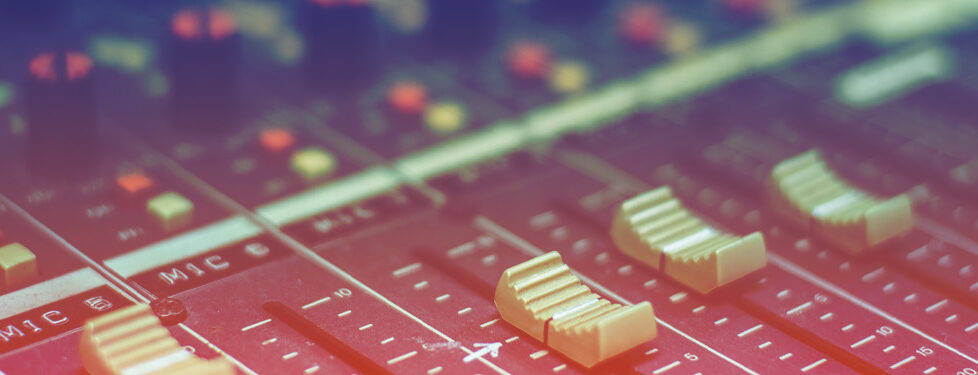What Is Panning In Music Production
When you’re at a live show, it’s pretty easy to discern where the sound is coming from certain points of the audience. There are visual cues of course–you can see the singers and different instruments on stage. But your ears are also taking in the music from the direction it is received-we’re listening in stereo. What is panning in music production? Controlling where the sound is coming from.
 It’s not easy to get the same feeling when listening to music at home, in your car, or your phone. That’s why we have multiple speakers, to emulate that immersive sound. Homes can even be equipped with surround sound, placing speakers in appropriate places to get that full range that places us in the middle of a song.
It’s not easy to get the same feeling when listening to music at home, in your car, or your phone. That’s why we have multiple speakers, to emulate that immersive sound. Homes can even be equipped with surround sound, placing speakers in appropriate places to get that full range that places us in the middle of a song.
But it wouldn’t be possible without the use of panning during the engineering of a song. In this remastered version of the Beatles Yesterday, you can hear how the guitar is heard from the right, followed by the lead vocals that seem to come from the “middle.” Eventually, other strings are heard from the left speaker.
What is Panning In Music Production?
Panning in Music Production means engineering the sound to give the listener a fuller experience. Inconsistent or overuse can be jarring, giving your song a disjointed feel. When done right, it can be almost imperceptible, but your listener will certainly feel more involved.
Panning has been a part of analog recording for decades and digital audio workstations all feature the ability to pan your music. Learning how to use panning is one of the most important skills to have as an audio engineer or music producer to create interest in their music.
What is Panning in Music?
Technically speaking, an audio pan or panning in music takes an existing mono track or stereo sound and sends it through the left and right channels found in a stereo field. By taking certain instruments and pulling them out of the “center,” you can draw more attention to them. You can have a guitar appear on the left of the spectrum while other instruments are heard on the right.
Panning techniques allow you to control the position of your instruments, backup vocals, and other sounds along the stereo image. Pan pots or sliders are used to mix sounds when engineering a song. For the best results, certain sounds and instruments should be panned in a mix in specific areas.
While there are no hard and fast rules–after all, music is meant to be creative–the most finished songs follow a few basic principles. When you mix music, certain instruments and sounds make more sense in specific left, center, and right (LCR) panning.
The center pan is where the “body” of the song is usually found. This is where the foundation of the song belongs, the meat and potatoes of the song. Lead vocals, bass guitar, drums, and other low-frequency, center pan instruments are found here and are the most audible to the listener.
On the left and right-hand sides of the stereo pan are where accent sounds are placed. These are higher-frequency sounds, such as strings, hi-hats, and other sounds that are meant to add highlights to the center pan. These sounds are meant to augment the song, not take it over.
Learn Panning From the Pros
With the Recording Connection Audio Engineering and Music Production Program, you’ll learn what panning is in music production, when to use it, and how to apply it to your music. But what sets us apart from other audio engineering and music production schools is who you’ll learn it from and where you’ll learn it.
Instead of a classroom, you are learning in a real-world recording studio. Instead of a teacher looking for tenure, you’ll be working with an engineer or music producer that’s making the music you listen to today. We give you one-on-one access to an industry professional, where you’ll learn to operate the gear, work with clients, and see how music is made.
And we do it in less time and for less money than four-year universities, trade schools, or community colleges. Our programs run from six to nine months, all for a fraction of what you’ll pay to get a diploma at those other institutions. With locations in 48 states, you’re never too far from a Recording Connection.
You won’t need to uproot your life, either. We get it–you have to pay the bills. The music business doesn’t run on a 9-to-5 schedule, so we can work around YOUR schedule. With help from your mentor and an Academic Facilitator, we develop a curriculum and times to appear that fit with what you have going on.
We even offer remote learning opportunities for those that need to deal with “life.” We know not everyone has the ability to come to the studio or are close enough to come into the studio. Although there’s nothing like being in the studio, you’ll still get answers to your questions and feedback on your work via video hookups.
All you really need is the responsibility to show up every day and give it your all. This isn’t a weekend hobby for your mentors, this is what they do for a living–it could be what you do for a living, too. Are you ready to amplify your life? Apply today.





